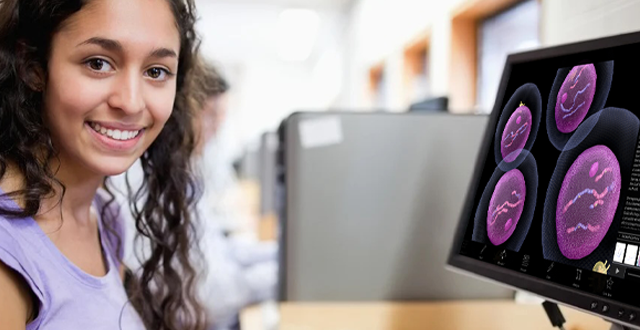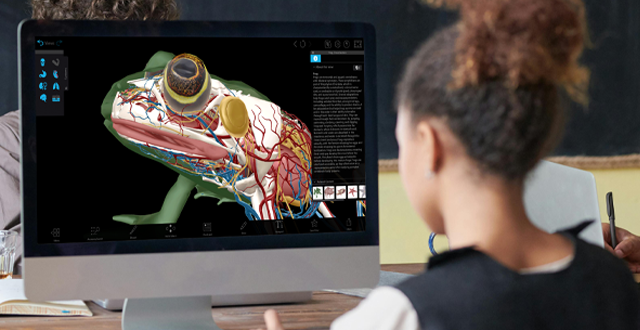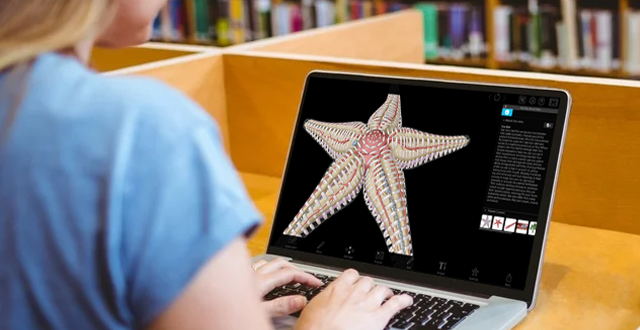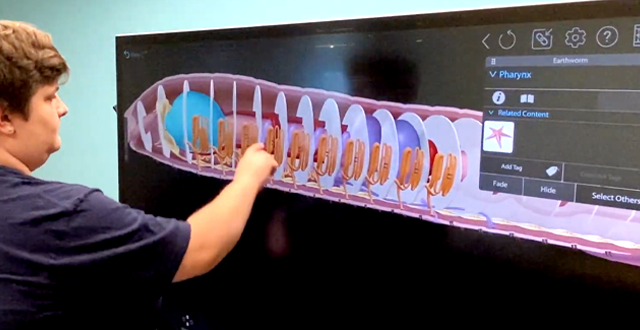Visible Body offers a health and life sciences library that contains over 24,000 assets, including 3D gross and microanatomy models, virtual animal dissection models, diagnostic images, animations, and interactive simulations of biological processes.
VB Suite offers 3D visual anatomy, physiology, biology, and pathology content on the web and mobile devices. Compare plans to see which license fits your classroom, lab, or school.
Visible Body Courseware includes all the interactive visual learning content from VB Suite, plus completely immersive assignments, a synced gradebook with student progress tracking, and LMS integration. Watch an overview.
For more information about pricing, request a quote.

Visible Body helps students tackle the most difficult introductory biology concepts with interactive 3D models.

Visible Body’s virtual animal dissection models are a mess-free, affordable solution to limited lab time and tight budgets for lab specimens. Students can complete virtual dissection lab activities using Visible Body Suite’s interactive 3D sea star, earthworm, frog, and pig models in the classroom or on their own devices at home.

Visible Body Courseware gives you all the visual learning and reference resources from Visible Body Suite, as well as the ability to assign bite-sized learning activities and quizzes to your students. You can also track students’ progress and time-on-task with the Courseware Gradebook and integrate your Courseware course with your school’s LMS.

Visible Body offers an extensive collection of free biology education resources you can use to keep students engaged
When you select "Subscribe" you will start receiving our email newsletter. Use the links at the bottom of any email to manage the type of emails you receive or to unsubscribe. See our privacy policy for additional details.
©2026 Visible Body, a division of Cengage Learning